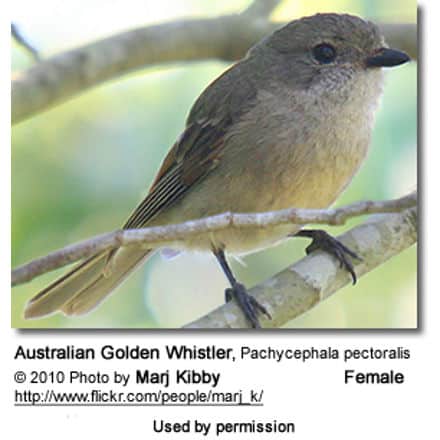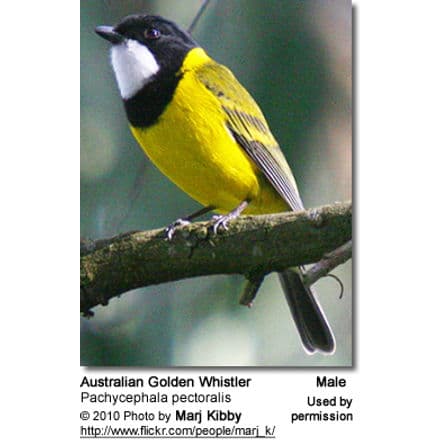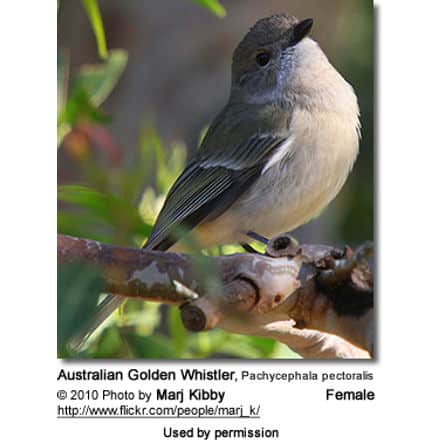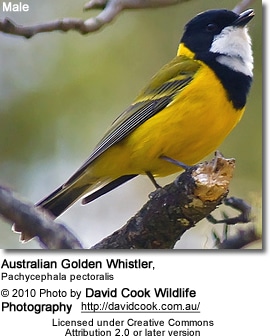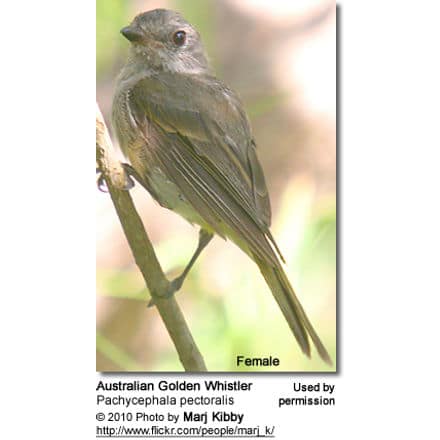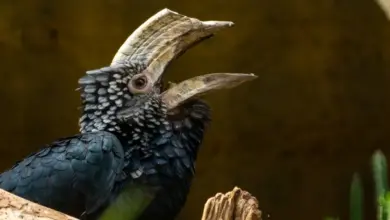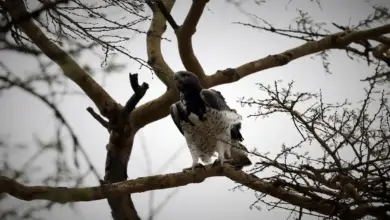Australian Golden Whistlers
The Australian Golden Whistler (Pachycephala pectoralis) is endemic to Australia, where it is found in forests, woodland, mallee, mangrove, and scrub (except Australia’s interior and most of the north); as well as the mountain forests in the Snow Mountains in the Papua Province of Indonesia.
The Australian Golden Whistler inhabits wooded habitats, particularly dense forests
They are mostly resident, although some south-eastern populations migrate north during the winter.
Description
The male is bright yellow below and on the nape (lower neck on the back). The wings and back are olive-green. It has a black head and band across the chest. Its throat is white.
A notable exception is the Norfolk Island Golden Whistler (Pachycephala pectoralis xanthoprocta) where the male has the same plumage as the female.
Females are mostly a dull brownish-grey – although some of them have yellowish undertail coverts (vent).
Both males and females have red-brown eyes, a black bill, and dark legs.,
The plumage of immature Golden Whistlers are rufous-colored. As they mature, they look similar to the female apart from the rufous edges to some wing feathers.
Similar Species: Males are easily confused with the Mangrove Golden Whistlers (Pachycephala melanura) – although that species’ is a little brighter below, and has a wider collar and a shorter tail. The female Mangrove Golden Whistler is yellow below.
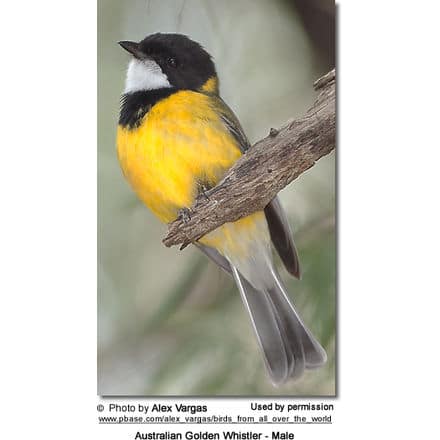
Species sometimes treated as subspecies are (status unresolved) …
- Rusty-breasted (Fulvous-tinted) Whistler (Pachycephala fulvotincta)
- Range: South-western Wallacea, Bali, and Java in Indonesia.
- Black-chinned Whistler (Pachycephala mentalis)
- Range: North Maluku in Indonesia.
- Banda Sea (Yellow-throated) Whistler (Pachycephala macrorhyncha)
- Range: central and south-eastern Wallacea.
- Bismarck Whistler (Pachycephala citreogaster)
- Range: Bismarck Archipelago in Papua New Guinea.
- Oriole (Yellow-throated) Whistler (Pachycephala orioloides)
- Range: Solomon Islands and the islands of Bougainville and Buka in far eastern Papua New Guinea.
- Fiji Whistler (Pachycephala graeffii)
- Range: Fiji.
- White-throated Whistler (Pachycephala vitiensis)
- Range: Fiji, and the Santa Cruz Islands in the Solomons.
Song / Vocalization
Australian Golden Whistlers have a pleasant, musical voice.
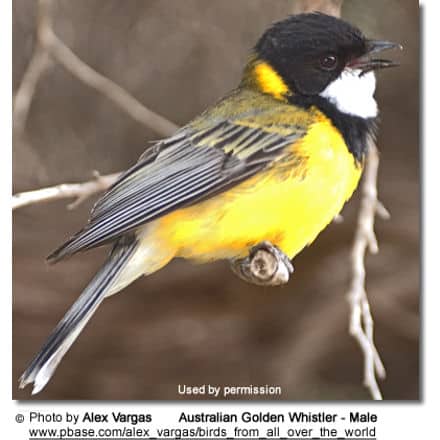

Status
The Australian Golden Whistler is common to fairly common and is therefore not considered threatened.
However, the populations of the Norfolk Island Golden Whistler (P. p. xanthoprocta) have declined for several years now due to habitat destruction and probably also due to introduced predators, such as rats. They are now mostly restricted to the Norfolk Island National Park.
Also, the Lord Howe Golden Whistler (P. p. contempta) remains common, but was listed as vulnerable at one time due to its small range; however, it has been taken off the list in recent history.
Diet / Feeding
The Golden Whistlers feed on berries, insects, and spiders. They usually forage alone, but occur in mixed-feeding flocks at favored feeding sites.
Breeding / Nesting
The Golden Whistlers breed between September and January. Both parents construct the shallow cup nest using twigs, grass, and bark – bound together with spider webs.
They usually only raise one breed for a reason. Both parents take turns in incubating the eggs, which hatch after 15 days. The young fledge when they are about 12 days old.
